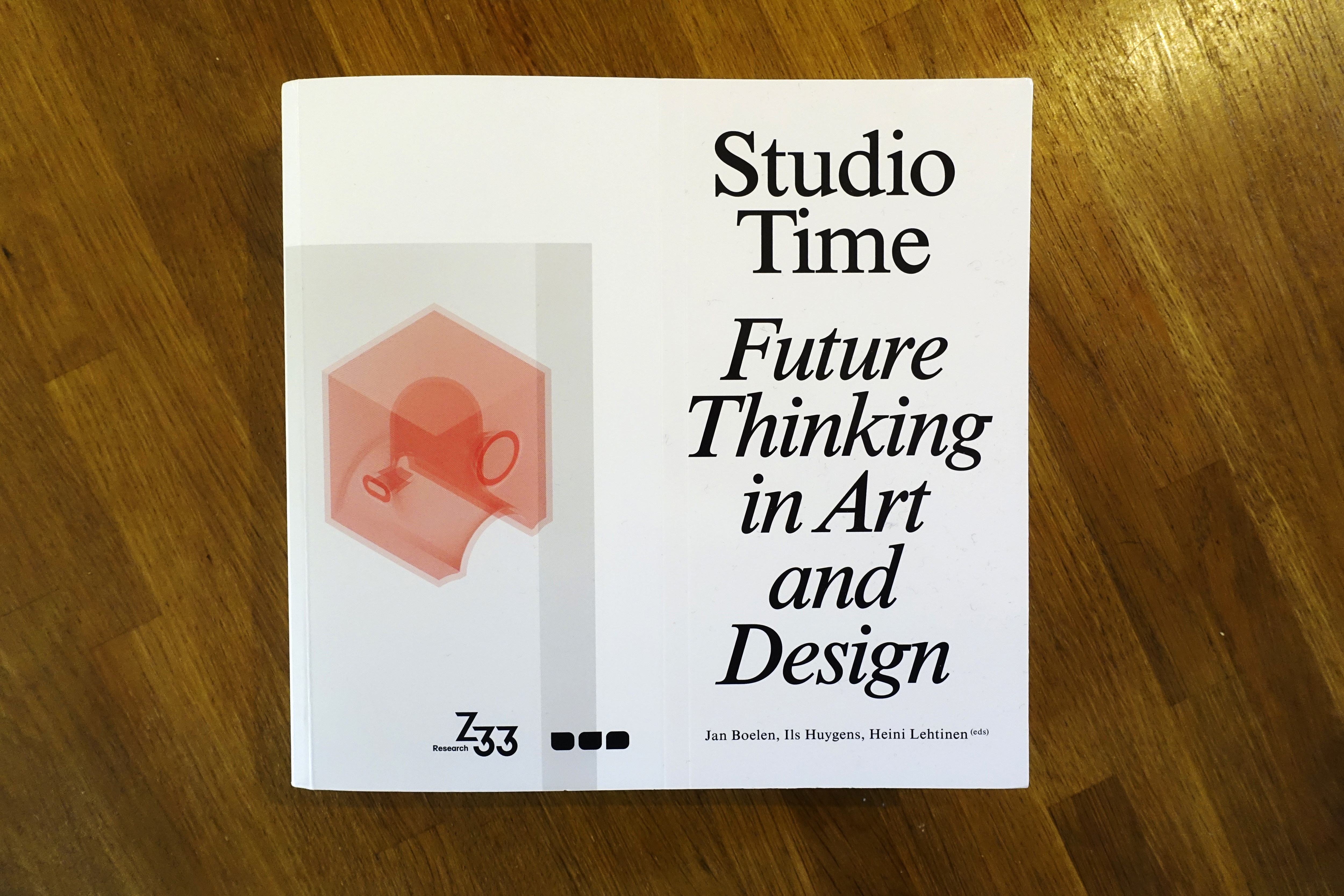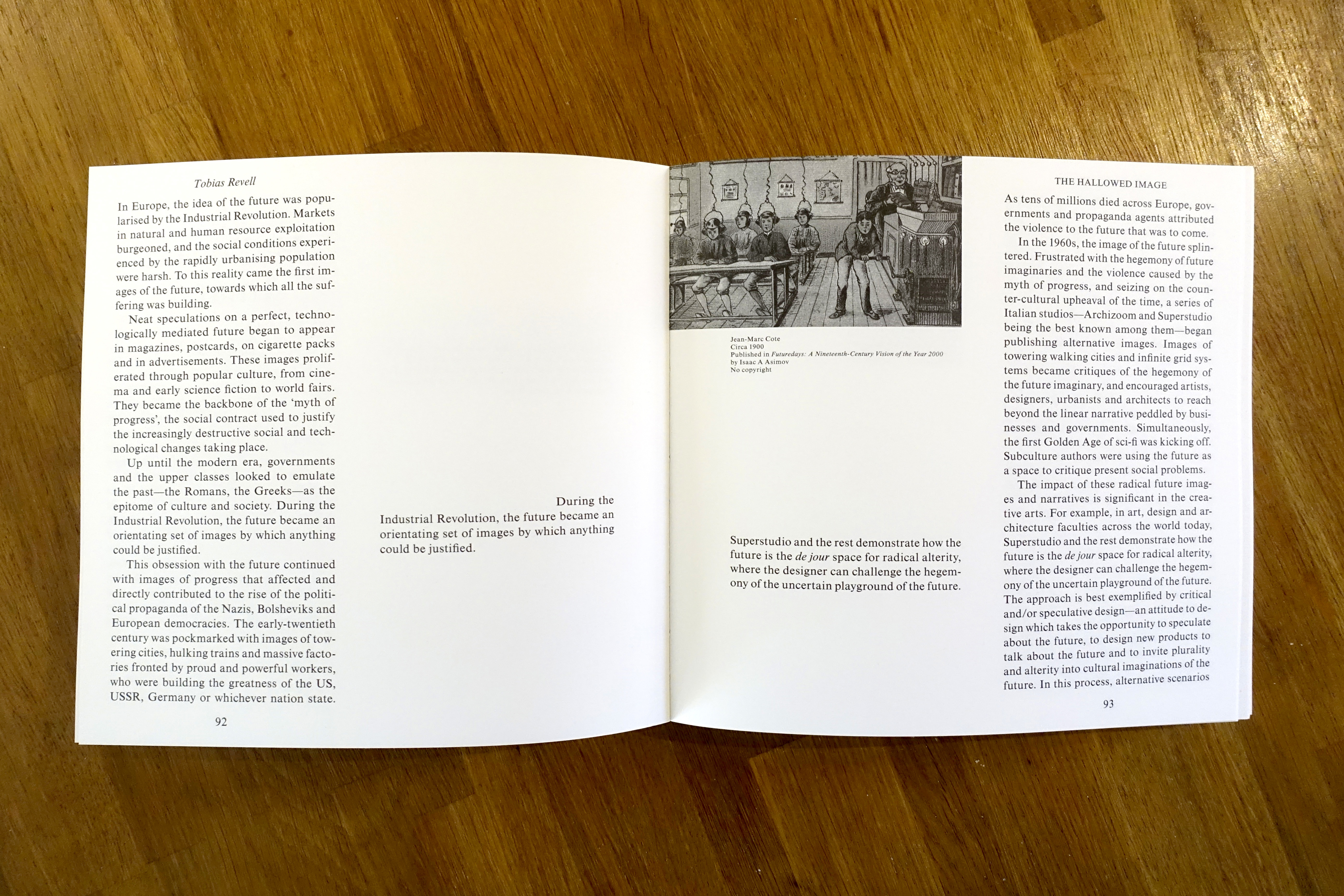

The Hallowed Image – Z33, Studio Time; Future Thinking in Art and Design – 2018-11
A short essay for Z33's Studio Time book available here. The essay addresses the use of images in foreclosing imagination of the future and discusses practices attempting to introduce alternatives.
In Europe, the idea of the future was popularised by the industrial revolution. Markets in natural and human resource exploitation burgeoned, and the social conditions experienced by the rapidly urbanising population were harsh. To this reality came the first images of the future, towards which all the suffering was building towards.
Neat speculations on perfect, technologically mediated future began to appear in magazines, postcards, cigarette pack and advertisements. These images proliferated through popular culture from cinema and early science fiction to world fairs. They became the backbone of the ‘myth of progress’, the social contract used to justify the increasingly destructive social and technological changes taking place.
Up until the modern era, governments and the upper classes had looked to emulate the past – the Romans, the Greeks – as the epitome of culture and society. In the industrial revolution, the future became an orientating set of images by which anything could be justified.
This obsession with the future continued with images of progress affecting, and directly contributing to, the rise of the political propaganda of the Nazis, Bolsheviks and European democracies. The early twentieth century was pockmarked with images of towering cities, hulking trains and massive factories fronted by proud and powerful workers each building towards the greatness of the US, USSR, Germany or whoever. As tens of millions died across Europe, governments and propaganda agents attributed the violence to the future that was to come.